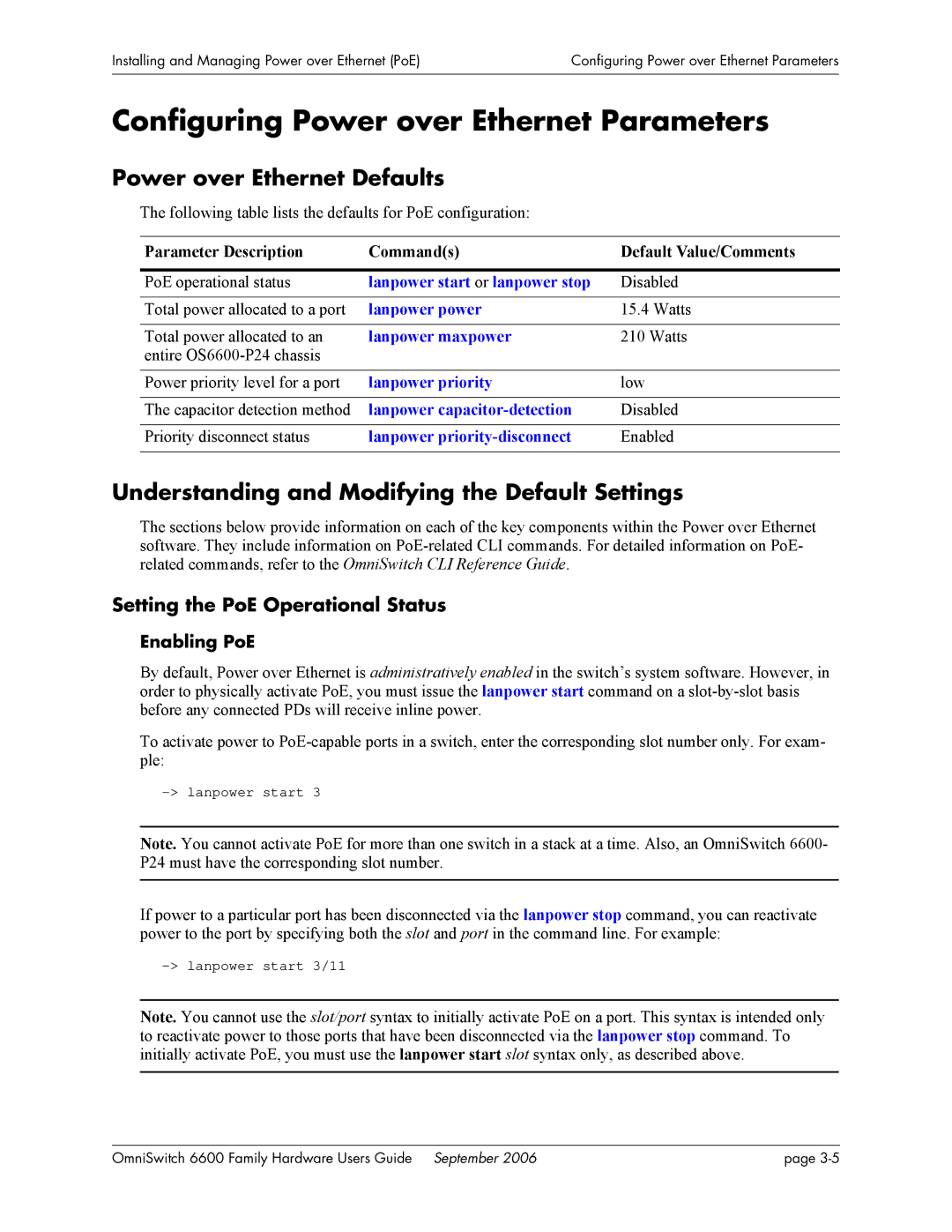
Installing and Managing Power over Ethernet (PoE) | Configuring Power over Ethernet Parameters |
|
|
|
|
Configuring Power over Ethernet Parameters
Power over Ethernet Defaults
The following table lists the defaults for PoE configuration:
Parameter Description | Command(s) | Default Value/Comments |
|
|
|
PoE operational status | lanpower start or lanpower stop | Disabled |
|
|
|
Total power allocated to a port | lanpower power | 15.4 Watts |
|
|
|
Total power allocated to an | lanpower maxpower | 210 Watts |
entire |
|
|
|
|
|
Power priority level for a port | lanpower priority | low |
|
|
|
The capacitor detection method | lanpower | Disabled |
|
|
|
Priority disconnect status | lanpower | Enabled |
|
|
|
Understanding and Modifying the Default Settings
The sections below provide information on each of the key components within the Power over Ethernet software. They include information on
Setting the PoE Operational Status
Enabling PoE
By default, Power over Ethernet is administratively enabled in the switch’s system software. However, in order to physically activate PoE, you must issue the lanpower start command on a
To activate power to
Note. You cannot activate PoE for more than one switch in a stack at a time. Also, an OmniSwitch 6600- P24 must have the corresponding slot number.
If power to a particular port has been disconnected via the lanpower stop command, you can reactivate power to the port by specifying both the slot and port in the command line. For example:
-> lanpower start 3/11
Note. You cannot use the slot/port syntax to initially activate PoE on a port. This syntax is intended only to reactivate power to those ports that have been disconnected via the lanpower stop command. To initially activate PoE, you must use the lanpower start slot syntax only, as described above.
OmniSwitch 6600 Family Hardware Users Guide September 2006 | page |
